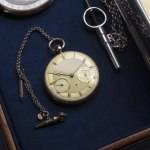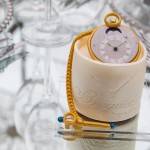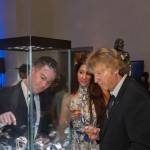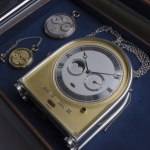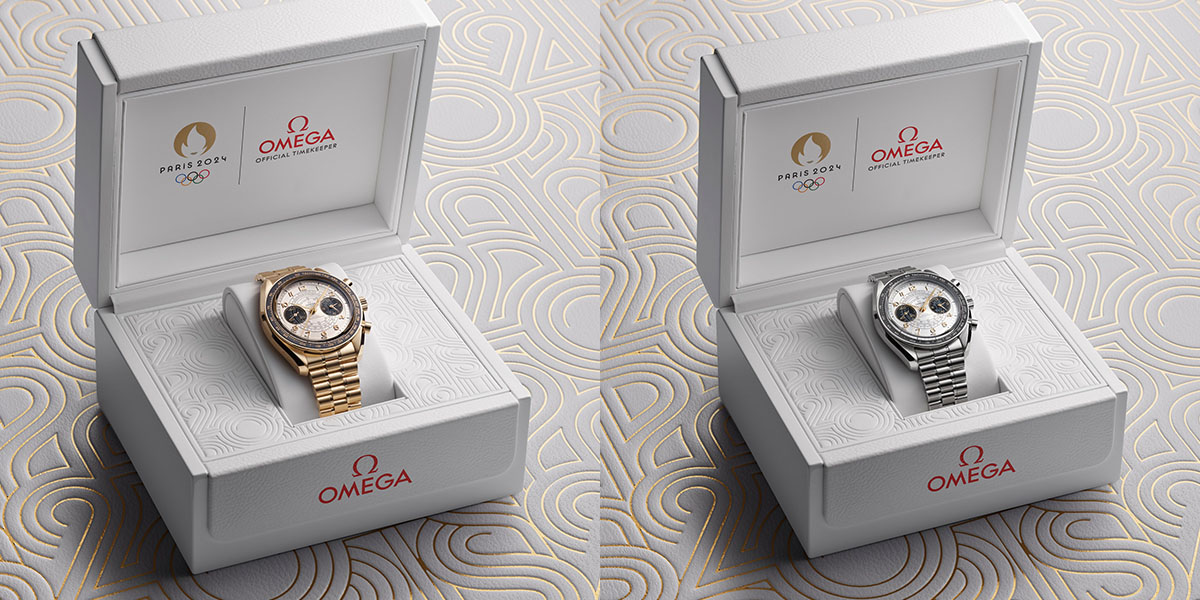
Highlights From The Breguet Art and Innovation Exhibit In San Francisco
How fitting that a revolutionary and tech-forward city like San Francisco has the honor of being the locale for “Breguet: Art and Innovation in Watchmaking,” the largest exhibition of Breguet antique timepieces ever to be shown in the United States. Considering how Breguet’s cutting-edge innovations transformed the nature of personal timekeeping, it is apropos because this exhibition clearly shows why Abraham-Louis Breguet is “the father of modern horology.” Emmanuel Breguet, historian, VP for Montres Breguet, took us on an exclusive tour of the exhibit, which will be on display at the beautiful Legion of Honor from Sept. 19, 2015 to January 10, 2016, before we enjoyed an elegant gala dinner attended by Breguet fans from Europe, Asia and the United States.
It’s no coincidence that the exhibit ends on the birthday of Abraham-Louis Breguet, who died 192 years ago today (Sept. 17) at the age of 76. Make sure that you check out this first-ever unique retrospective of his work that we know the most ardent horology enthusiasts like yourselves are sure to find educational, interesting and, trust us, simply dazzling to view. Cast your eyes on more than 70 pocket watches, clocks and horological instruments dating from the time of this pioneer and his successors.
From its beginnings in Paris in 1775, Breguet advanced great technical developments such as the winding watch, the first wristwatch, the repeating mechanism and most notably, the tourbillon. Breguet played a key role in the history of watchmaking, elevating the craft to its zenith by producing finely made watches that were a pleasure to handle and use.
The exhibition clearly presents the work of an innovator who had such a decisive influence on his craft—time measurement. One of watchmaking’s chief characteristics is its dual nature: it belongs as much to the world of science and technology as that of the decorative arts. The items presented are all of immense quality representing both scientific objects and objets d’art.
When you visit the splendid Legion of Honor, you’ll find an exhibition that deals with Breguet’s lifework by themes, ranging from the simplest watches (models with a single hand) to the most complicated (those providing multiple indications), and from purely scientific objects (marine chronometers) to exquisitely refined decorative clocks (such as those with bronzes by Thomire).
The horologist created a company known for its ingenuity, as well as the reliability and portability of its watches. It’s no wonder these objects of desire were worn by the powerful and elite in Europe, including Napoleon Bonaparte, Tsar Alexander I and Queen Victoria. His reputation was to create special pieces for his most prestigious clients, including the very first wristwatch, produced in 1810 for Caroline Murat, Queen of Naples.

The most famous Breguet timepiece linked to a European monarch is the world-renowned “Marie-Antoinette” pocket watch, No. 160. This extraordinary piece took 44 years to make and was the most complicated watch of its time. A replica is on display at the Legion of Honor and we know you’ll enjoy seeing it. Travel clocks, another Breguet creation, were made of bronze with ancient-styled pillars and capitals. When you visit this exhibit you can relive the history of late 18th century and 19th century Europe – in particular the period of the French Revolution, the Napoleonic adventures and then the period of the Congress of Vienna – through the life of Breguet and his family. History is retold when one looks into the travel clock purchased by Bonaparte just days before his departure to Egypt. One of our other favorite pieces was a small gold ring watch whose alarm was a tiny needle that pricked the wearer’s finger at the appointed time, sold to Count Paul Demidov in 1836. We also loved the diamond “touch watch,” sold in 1800 to Empress Josephine Bonaparte, who only had to feel the timepiece’s pointer to figure out the time.

Adding life to the timepieces are the paintings that surround them. For instance, when you gaze at the “touch watch,” a stunning blue-enameled gold case with a diamond-set pointer and touch studs of large round diamonds, from the front of the case, you’ll also see a large painting, Empress Josephine in Coronation Robes, 1807-1808, by François Gerard on the back wall. Other art works include Napoleon Bonaparte on the Bridge at Arcole, 1796-1979, by Antoine-Jean Gros, Queen Marie Antoinette and Two of Her Children Walking in the Park of Trianon, 1785, by Adolf Ulric Wertmüller and a portrait of Abraham-Louis Breguet, done before 1800.

It truly was a joy to be amongst the first to experience this exhibit, whose entrance is not only eye-catching but ear-catching as well. At the front, you’ll see the large face of the “simple watch” sold to Napoleon’s second wife, Empress Marie-Louise, in 1813 and across from it, the inside casing showing the sight and sound of the ticking movement of that same pocket watch. A fitting ending to the evening gala was the dessert served at dinner: an almond orchard cake topped with an edible version of Empress Marie-Louise’s timepiece.
Photo Credit: Haute Time. For more information, please visit the official Breguet website. Follow Haute Time on Instagram to catch all of the new releases as they happen.
 SIGN UP
SIGN UP






